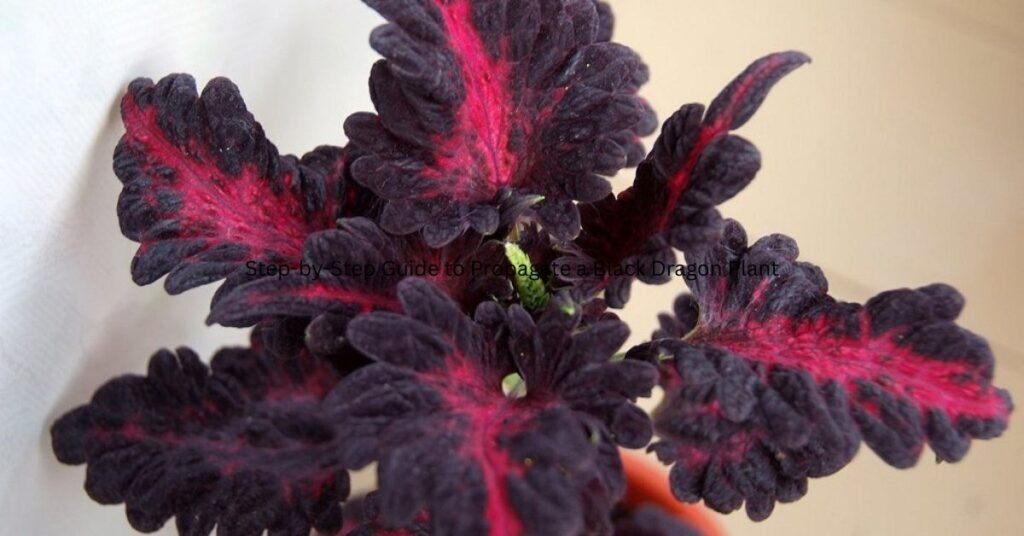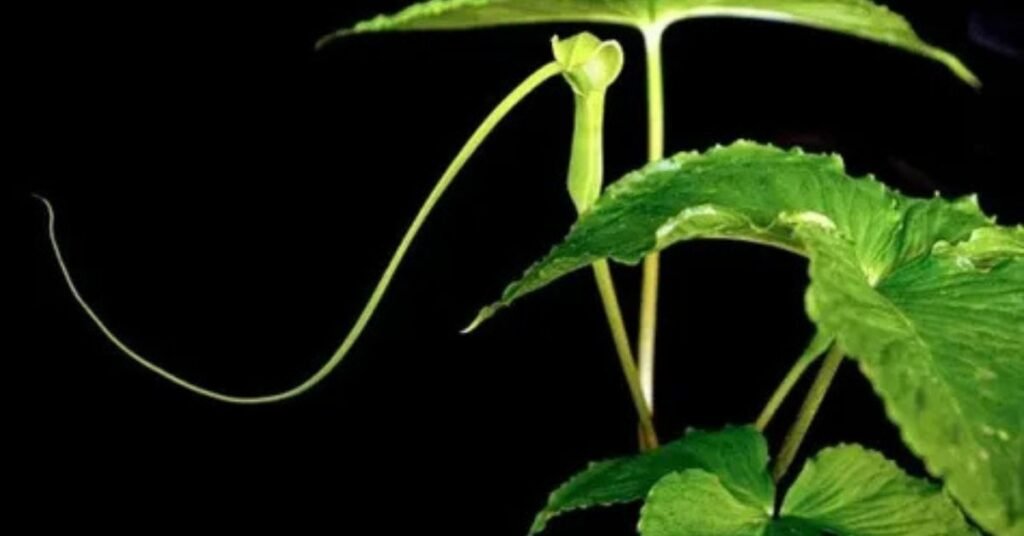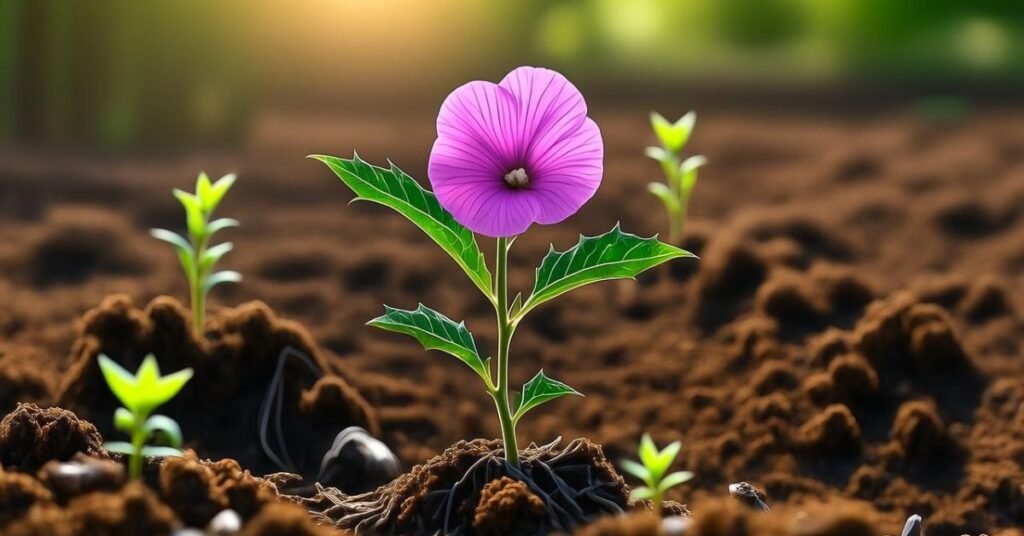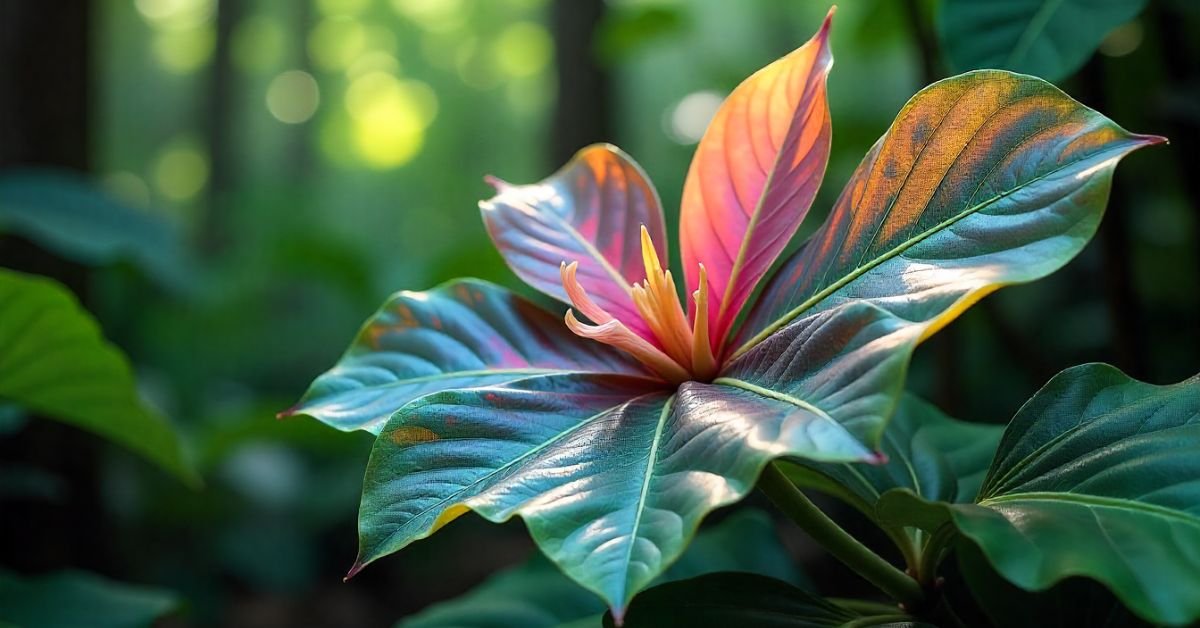Introduction
The Black Dragon plant is a striking houseplant with deep green, almost black leaves. It is a type of ” Alocasia” known for its bold and exotic look. This plant is popular among indoor gardeners because it brings a tropical vibe to any space. Propagating a plant lets you grow more of these beautiful plants without buying new ones.
Imagine turning one stunning plant into several! Propagation is exciting and rewarding. You can watch tiny new plants grow from your own Black Dragon. It’s a fun project for plant lovers and beginners alike.Following the right steps makes the process simple.
In this guide, you will learn how to propagate a this plant step by step. We’ll explore the best methods, tools, and tips to ensure healthy new plants. With this guide, you’ll be ready to expand your indoor jungle with confidence.
Black Dragon Plant Propagation
Propagating this plant is simple and fun. You can start by using stem cuttings or dividing the plant. Choose a healthy stem with a few leaves. Cut it with a clean, sharp tool. Before planting, let the cutting dry for a day. As a result ,rotting is prevented and growth is improved
Once ready, place the cutting in moist, well draining soil. Keep it in a warm spot with indirect sunlight. Wait for new roots to grow after watering lightly. With proper care, the plant will start to develop fresh leaves. Propagation is a rewarding way to grow more plants for your home or garden.
Best Soil and Watering Practices for Black Dragon Plant
Well draining soil is best for growing the plant. A mix of potting soil, perlite, and sand works well. This type of soil prevents water from staying too long. Too much moisture can cause root rot. Always choose a pot with drainage holes to keep the plant healthy.
Water this plant when the top layer of soil feels dry. Avoid overwatering, as the plant does not like soggy soil. In summer, it may need water more often. In winter, reduce watering because the plant grows slower. Keep your plant healthy by following these simple soil and watering tips.
How to Identify a Thriving Black Dragon Plant
There is nothing more vibrant and fresh looking than a thriving Black Dragon Plant. Its leaves are deep green and firm to the touch. New leaves appear regularly, showing healthy growth. The plant stands upright without drooping. Roots stay strong and do not have any foul smell. If your plant shows these signs, it is happy and growing well.
Black Dragon Plant vs Other Indoor Foliage Plants
The Dragon Plant is unique among indoor foliage plants. Its dark, glossy leaves give it a dramatic look. There are usually lighter or softer tones in indoor plants. The plant also grows well in low light, while some plants need bright spots. It needs moderate watering and simple care, making it beginner friendly. Comparing it with other plants helps you choose the right one for your space.

| Feature | Black Dragon Plant | Other Indoor Foliage Plants |
| Leaf Color | Dark green to almost black | Light to medium green |
| Light Requirement | Low to medium light | Medium to bright light |
| Watering Needs | Moderate, avoid soggy soil | Varies from low to high |
| Maintenance Level | Easy | Moderate to high |
| Aesthetic Appeal | Bold and dramatic | Soft and refreshing |
Enhancing Home Décor Naturally
This Plant adds elegance to any room. Its dark, shiny leaves create a bold and modern look. Place it in a corner or near a window to make the space lively. It blends well with both bright and neutral interiors. The plant also gives a fresh and calming vibe to your home.

Using this plant in home décor is simple and stylish. A white or ceramic pot highlights its deep green leaves. Grouping it with other small plants creates a mini indoor garden. It does not need too much attention, so it stays beautiful with little effort. This plant is a natural way to enhance any living space.
Fertilizing Tips to Boost Black Dragon Plant Growth
Fertilizing the Dragon Plant helps it grow strong and healthy. A balanced liquid fertilizer works best. Feed the plant during spring and summer when it grows actively. Reduce feeding in winter because the plant rests. Proper fertilizing keeps the leaves dark, shiny, and vibrant.
Here are some simple fertilizing tips:
- Use a balanced liquid fertilizer every 4–6 weeks in the growing season.
- Dilute the fertilizer to half strength to avoid burning the roots.
- Apply fertilizer to moist soil for better absorption.
- Stop fertilizing during winter to let the plant rest.
- Watch for yellowing leaves as a sign of over fertilizing.
Signs of a Healthy Black Dragon Plant
A healthy Black Dragon Plant looks fresh and strong. Its leaves are deep green and shiny. The plant stands upright without drooping. New leaves appear often, showing active growth. The roots are firm and free from any bad smell or rot.
Another sign of health is the absence of yellow or brown leaves. The soil stays slightly moist but not soggy. The plant reacts well to light and does not look weak or pale. When your Black Dragon Plant shows these signs, you know it is thriving and happy.
Common Problems and Solutions for Black Dragon Plant
The Black Dragon Plant can face a few common issues. Yellow leaves often mean overwatering. Drooping leaves may signal underwatering or low light. Brown tips appear if the air is too dry or the plant gets too much fertilizer. Pests like spider mites or mealybugs can also affect the leaves.
Solving these problems is simple with proper care. Water the plant only when the soil feels dry. Move it to a spot with indirect light to improve growth. Trim damaged leaves to keep it neat. Clean the leaves and check for pests regularly. With these small steps, your Black Dragon Plant will stay healthy and beautiful.
Conclusion
The Black Dragon Plant is a stunning and low maintenance houseplant. Its dark, glossy leaves bring a unique charm to any space. With proper care, it can thrive for years. Simple watering, the right soil, and occasional feeding are enough. Adding a Black Dragon Plant to your home is an easy way to enjoy beauty and nature together.
FAQs About Black Dragon Plant
1. How often should I water my Black Dragon Plant?
Water only when the top inch of soil feels dry to avoid root rot.
2. Can the Black Dragon Plant grow in low light?
Yes, it grows well in low to medium indirect light, making it great for indoor spaces.
3. Why are my Black Dragon Plant leaves turning yellow?
Yellow leaves usually mean overwatering or poor drainage.
4. Do I need to fertilize the Black Dragon Plant often?
Fertilize lightly every 4–6 weeks during spring and summer, and pause in winter.
5. How can I make my Black Dragon Plant look healthier?
Provide proper watering, indirect light, and wipe leaves regularly to keep them shiny and fresh.


